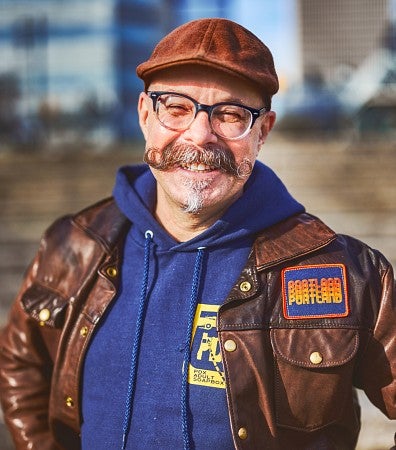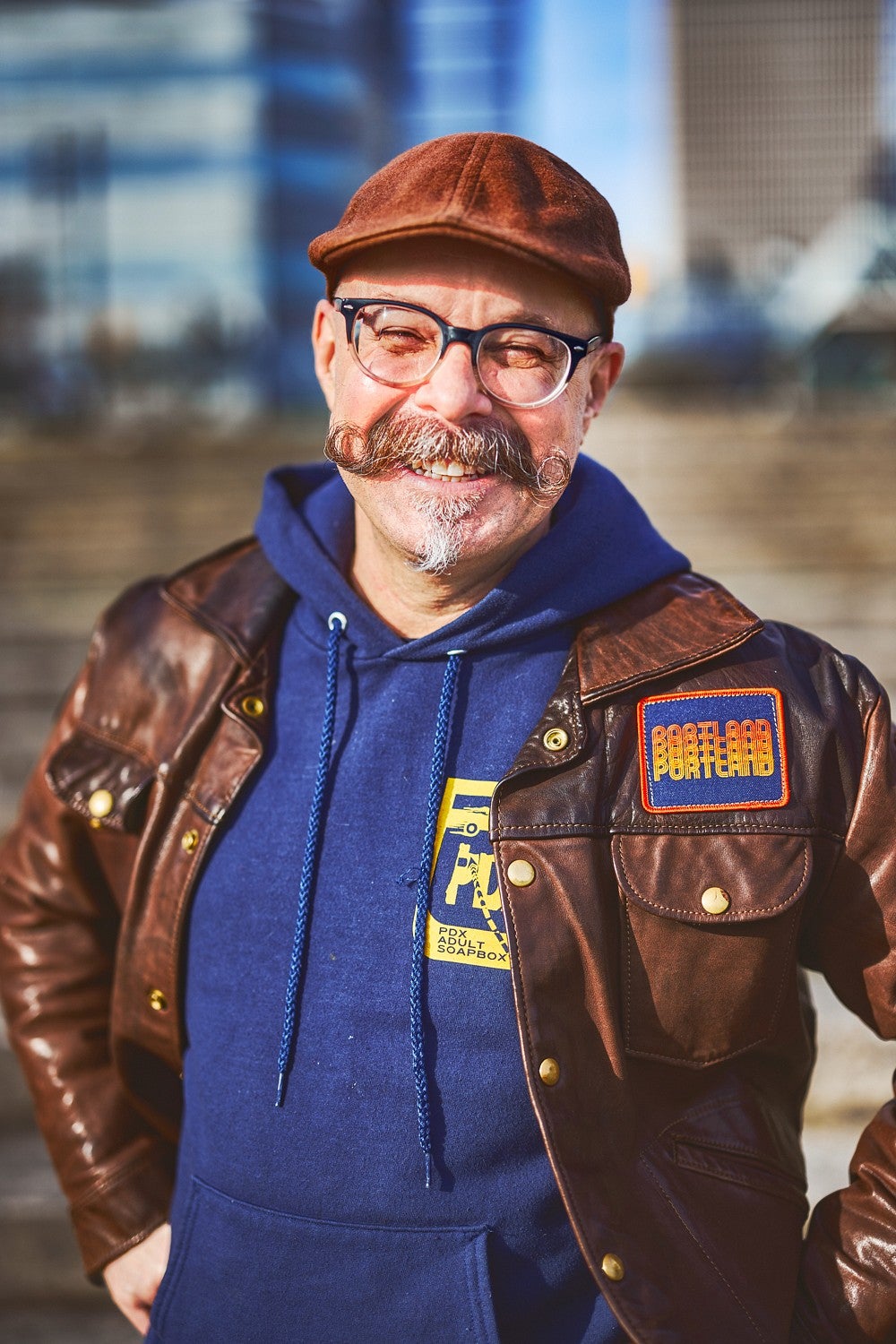Immersive Media Communication Master’s alum transforms storytelling with augmented reality.
Meet Jason de Parrie-Turner
Current job:
Owner of Heliorana Multimedia
Biggest career accomplishment:
When Heliorana won our first government contract, it was with the Oregon Department of Education in 2018, and we are still working with them today. It led to more contracts from local, state, and federal agencies.
SOJC faculty or staff who made the biggest impression on you and how:
I’ve had so many great faculty and staff at SOJC, but I would have to say Dr. Danny Pimentel made the biggest impression. He is an endless fountain of energy and inspiration and continues to encourage me to build and research in the XR (extended reality) space through his example. In fact, it is through his influence that I decided to get my Ph.D.
Most useful experience in your master’s program:
The experience that encapsulates my entire program was working on my capstone project. Along the way I learned many new programs, how to perfect my pitch and how to build, research and market a unique AR experience. It has opened up many new opportunities for my company.
Best thing about the SOJC:
Easily, the people, our community! Our IMC cohort still maintains a text thread, checking in with each other and celebrating each other’s wins. This community is fostered from the top by the stellar leadership of Dr. Regina Lawrence and Dr. Donna Davis.
By Kaia Mikulka ’25
Jason de Parrie-Turner began his career in production in an unusual way: as a child actor.
First on set at the age of 6, he starred in commercials as a child actor. De Parrie-Turner believes it was that early exposure to TV and movie sets that gave him an itch to work in the cinema space — but surprisingly, not a desire to be in front of the camera.
“As a young kid, I got to see the magic of how a production comes together,” de Parrie-Turner said. “It gave me the early bug for how the whole thing got built.”
That fascination with production never really left him, but when he enrolled at Cal State Sacramento, his passion at the time pulled him in a different direction: He majored in studio art/art history and psychology.
“When I look at art, it compels me, and I feel the whole story of the piece,” de Parrie-Turner said. “I was trying to make art that spoke to people like that.”
He started with painting but felt like a flat canvas wasn’t engaging enough. He moved on to sculpture and finally landed right back where he started: in the video space. Video art turned into video documentation, with Turner making films with his college friend Joe Carnahan, who would later go on to write and direct movies in Hollywood.
After getting his master’s in media studies in 2006 from Sacramento State, de Parrie-Turner’s next journey took him around the country, writing, producing and editing content for the Outdoor Channel and other programs.
An indie documentary about Portland’s bike culture gave his work an unexpected boost. The documentary “Veer” premiered to a sold-out audience at the Victoria Film Festival in British Columbia, where demand was so high that it became the only film to get a second sold-out screening. The buzz drew attention from local media and bike advocacy groups, sparking screenings across Canada and beyond after it won Best Documentary at the Calgary International Film Festival.
“Portland was considered one of the most bike-centric cities in the world,” de Parrie-Turner said. “Our film drew international attention from bike enthusiasts who sponsored screenings around the globe.”
In 2011, after working as a freelancer for a while, he started his own production company, Heliorana Studios. Heliorana is a Latin mashup for “sunfrog.” His team has worked on projects for clients from Nike, Adidas and FOX Sports to the Oregon Department of Education and the Smithsonian Channel.
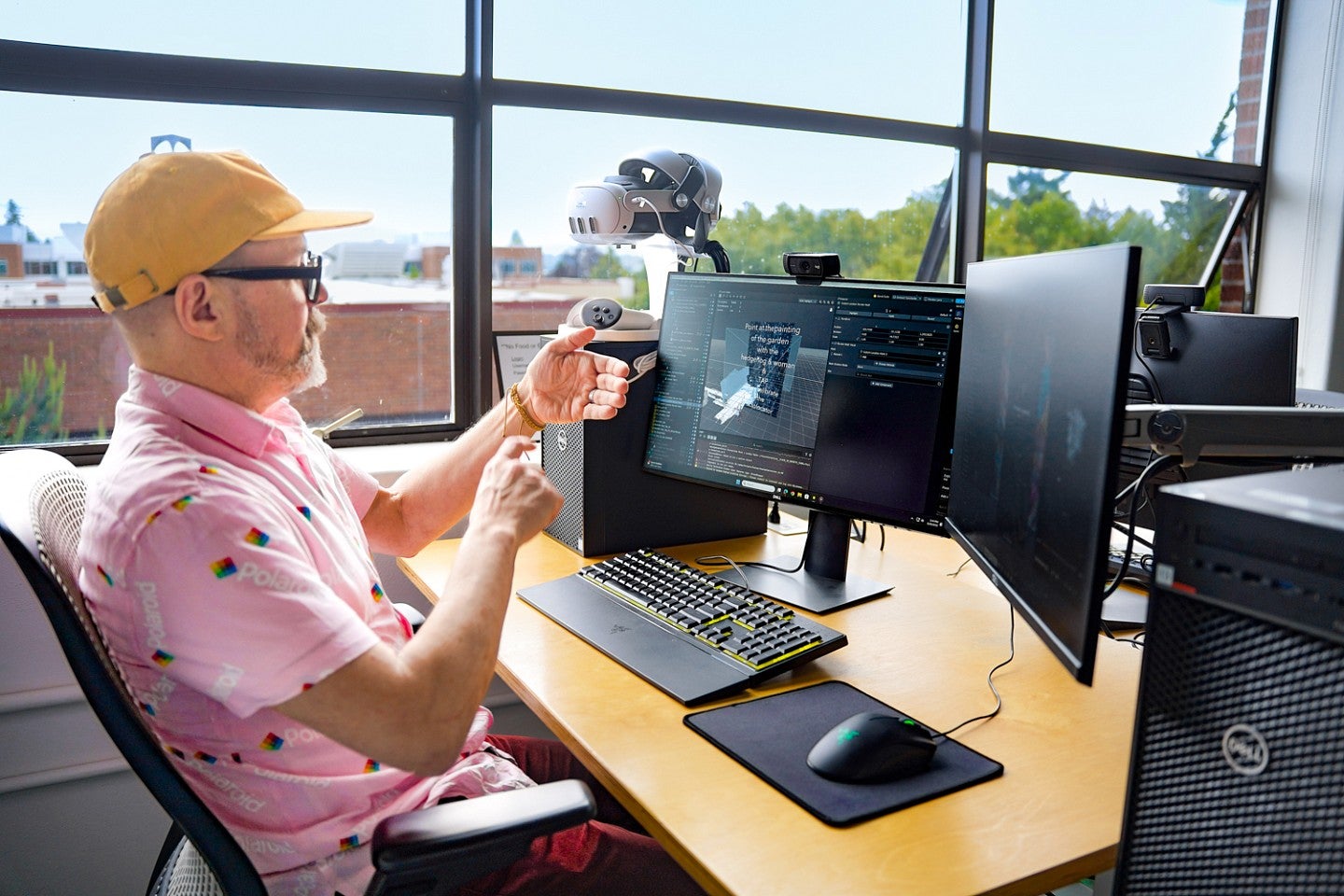
Exploring interactive experiences using experimental design
While filming a documentary about the power of play, de Parrie-Turner discovered the emerging field of experiential design, where creators focus on building interactive experiences rather than static works. His introduction came via a secret group of experience builders in San Francisco called The Latitude Society, who showcased their work through escape rooms, interactive theater and street games.
De Parrie-Turner had been interested in the concept of mediated reality even before augmented (AR) reality and virtual reality (VR) were possible, and long before people began experiencing much of reality through media. Experimental design offered an exciting next frontier.
“That was the piece I was looking for, that interactive component,” de Parrie-Turner said. “People who were building experiences that told deeper and more dynamic stories, that brought viewers in as active participants in a way that paintings or sculptures could not.”
Discovering the SOJC’s Immersive Media Communication Master's program
As Heliorana became more established, de Parrie-Turner wanted his company to step into the experiential space. He first learned about the SOJC’s new Master’s in Immersive Media Communication in 2022, after attending XR presentations at the historic White Stag building on the University of Oregon’s Portland campus.
“One presentation was led by Dr. Danny Pimentel, who later became my advisor, and another by Wesley Della Volla, who was working with National Geographic on several VR projects and a VR theater,” de Parrie-Turner said. “I realized that was the next level of interaction I wanted.”
The SOJC’s Immersive Media Communication Master’s program trains students to design, analyze and produce strategic experiences using emerging technologies like VR and AR. Graduates gain hands-on skills in creating immersive content and experiences while preparing for careers as strategists, creators and technology leaders.
De Parrie-Turner started as part of the inaugural cohort in 2023 and graduated in June 2025.
“What I did is the same as entrepreneurs who go back to school for an MBA,” he said. “I wanted my MS to push my business further.”
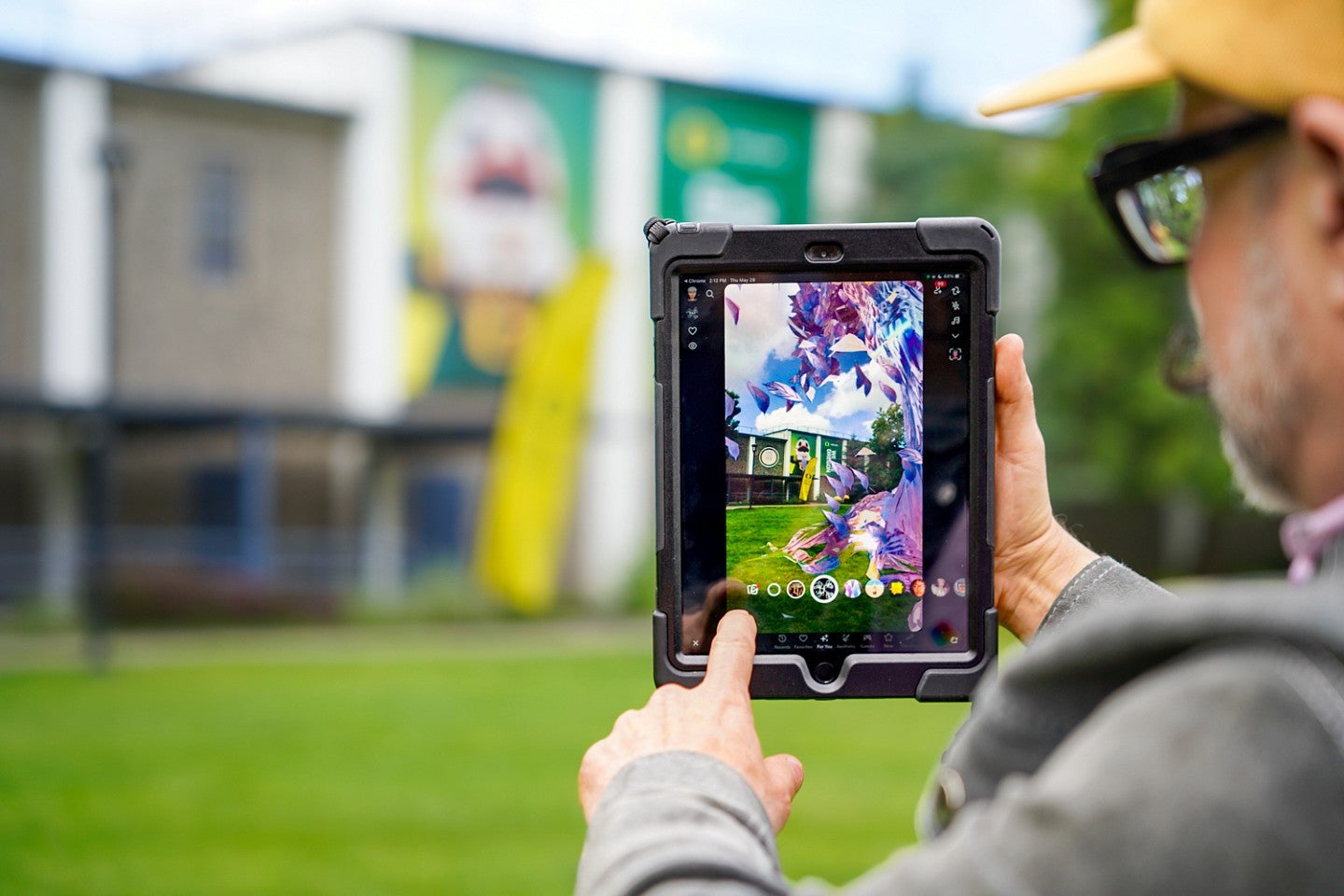
Getting expertise in virtual reality, augmented reality and artificial intelligence
Throughout his time at the SOJC, de Parrie-Turner learned more about VR, AR and AI and got his drone license, all while doing research to advance his education.
“The most exciting thing about the program was how hands-on it was,” de Parrie-Turner said.
With Pimentel, who is the director of the SOJC’s Oregon Reality Lab, de Parrie-Turner and others from his cohort partnered with the Snap AR Scholars program. The group builds Snapchat AR experiences for nonprofit organizations, such as Hope for Haiti and the Oregon Department of Fish and Wildlife, to help engage audiences in their work.
Additionally, de Parrie-Turner contributed to a team project working on an AR mural for the Portland campus, an initiative that came to life through postcards and large-scale activations in the library and courtyard. Pimentel connected the cohort with Nadia Tamez, founder of Synergy Studios in Guadalajara, Mexico, who guided the team’s design process and later offered students a competitive opportunity to intern for her company.
De Parrie-Turner was one of only three students selected.
“The three of us went down and contributed ideas for the finale of Intermoda, Mexico’s largest fashion expo,” de Parrie-Turner said. “We created AR-activated designs for temporary tattoos and T-shirts that were available during the closing party.”
In addition to experiential design, the master’s program also gives students a deep dive into AI. One example is Immersive Media Seminar JCOM 610: AI in Communication, taught by Pimentel. In the course, students build full products with different AI programs and create machine learning (ML) models. The students also worked with large language models (LLMs), AI systems trained on massive text datasets to understand and generate human-like language.
Creating a real-world capstone project for McMenamins
For his capstone project, de Parrie-Turner developed a prototype of a location-based augmented reality (LBAR) experience for the Portland-based hospitality and restaurant company McMenamins, designed as a gamified history tour that brings stories to life through devices like iPads and wearable AR glasses.
He is now in talks with McMenamins about how the prototype could be expanded into a full-scale experience. De Parrie-Turner’s research focus is on how it might deepen visitors’ sense of place and place attachment to the locations.
“The augmented reality piece adds another layer to a place that is invisible, but it’s there. It exists. It’s information,” de Parrie-Turner said. “But it’s unlocked through a device, whether it’s wearables, your phone or an iPad.”
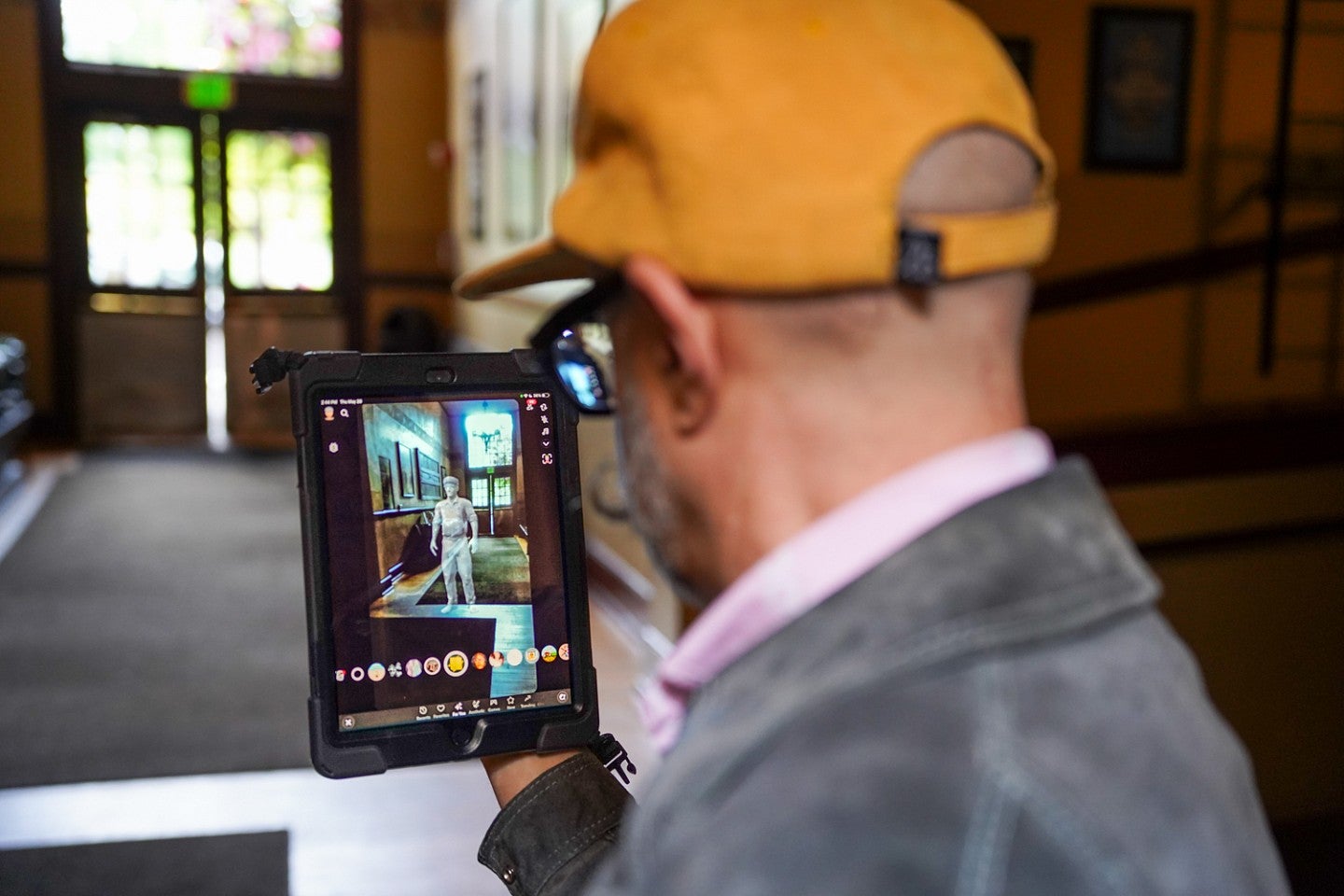
Researching how immersive technologies create connections
De Parrie-Turner credits Pimentel with influencing him to pursue his Ph.D. in communication and media studies through the SOJC.
“His research classes are what got me excited about not only building, but also researching the thing you built to understand how it actually affects the audience,” de Parrie-Turner said.
As he pursues his doctorate, de Parrie-Turner hopes to continue his XR experience research beyond his master’s work, focusing on how immersive technologies like AR and VR can shape deeper psychological connections and a sense of place.
His work goes beyond testing usability. He aims to understand how these experiences affect people on a more human level.
“My ultimate goal is building interactions, experiences, augmented reality, virtual reality, mediated reality, with a focus on augmented reality and hybrid experiences,” de Parrie-Turner said. “And then testing those apps and experiences and seeing if they’re achieving what we hope that they are.”
For de Parrie-Turner, augmented reality isn’t just a tool for storytelling, but a way to create authentic connections in a time when digital media feels increasingly uncertain.
“With media continually evolving and generative AI moving into prominence, it’s becoming harder to believe what we see,” de Parrie-Turner said. “I believe we are in a time of an ‘experiential economy,’ and IRL experiences will only continue to grow in importance for individuals.”
Kaia Mikulka is a recent SOJC grad who majored in advertising with a minor in business. Kaia’s current interests include art direction, design and brand identity, and their intersection with AI and psychology.

